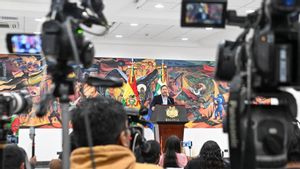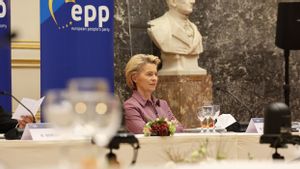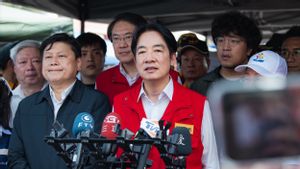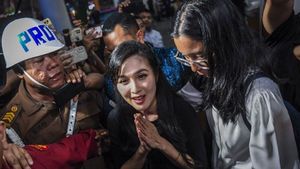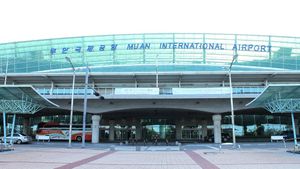JAKARTA - One of the districts in Busan offers cash prizes for those who want to take part in the match to the death, as South Korea faces a low birth rate to the high number of single women.
The Saha District Government, located in the western part of Busan, South Korea's second-largest city, recently approved a revised budget to fund a matchmaking program to encourage local women and men to meet with the goal of starting a family, with financial incentives in different numbers and getting bigger. offered for every step in the process.
The project will begin in October, with a meeting day for potential partners.
"For couples who are willing to have a relationship through the event, they will get an incentive of 1 million won (IDR 11,837,172)," reported The Korea Times on June 26.
If they hold a "sang-gyeon-rye," or family members' meeting (which is usually arranged before the wedding), the couple will get an additional 2 million won (Rp23,674,345).
Meanwhile, if they get married, another big bonus of 20 million won (Rp236,743,453) will be given. It does not stop there, the newlyweds can also receive 30 million won (Rp355,115,179) to pay the house down payment or 800,000 won (Rp9,469,738) per month to subsidize rental for up to five years.
To take part in this'match', participants must be between 24 and 43 years old and live or work in Saha. They must also apply for an application and undergo a screening and interview process before being allowed to participate in the program.
The number of participants in this pilot program will be small and limited to the citizens of Ginseng Country. However, the district government said they plan to expand it and include foreign nationals in the future.
"This project is aimed at overcoming the population ravine crisis caused by a decrease in birth rates by forming a multicultural local community in the future," Saha District Head Lee Gap-jun told the media.
"With the decline in the local population and the overall reality, there is a strong determination to continue this project," he continued.
South Korea's birth rate, already the lowest in the world, dropped to record lows in 2023, with the average number of infants expected for a South Korean woman during her reproductive period dropping to 0.72 from 0.78 in 2022, according to data from Korean Statistics.
This number is far below the 2.1 children needed to maintain the country's current population of 51 million.
Meanwhile, more than four of the five Koreans aged 30 to 34 are unmarried, adding to serious concerns over the country's low birth rate and rapidly shrinking population, data showed Thursday.
In a summary of routine reports on data from the Korean Statistical Information Service (KOSIS), around 81.5 percent or 7.83 million of the 9.61 million men and women in the 30 to 34 year age group were single in 2020.
Single proportions more than tripled from 18.7 percent in 2000. The rate of increase is also sharper than the two other age groups surveyed.
For those aged 25 to 29 years, the figure increased by 33.2 percentage points, from 54.2 percent to 87.4 percent during the period 2000 to 2020.
For those aged 19 to 24 years, the figure increased by 5.6 percentage points, from 93.1 percent to 98.7 percent during 20 years.
While those aged 30 to 34 years in 2020, 86.1 percent of men and 76.7 percent of women are single. In particular, 50.5 percent of those with high education do not get married.
"This is the first time more than half of the people surveyed have remained single," the report said.
Last May, South Korean President Yoon Suk-yeol said he plans to form a new government ministry to address the "national emergency" of the lower birth rate when facing a deepening demographic crisis.
In a televised address, President Yoon said he would ask parliamentary cooperation to form a Low Birth Rate Counter Planning Ministry.
SEE ALSO:
"We will mobilize all the country's capabilities to address low birth rates, which can be considered a national state of emergency," he said, quoted by CNN.
Prior to the latest program, the national and regional governments of South Korea had spent billions of dollars in various fields, such as child care subsidies in an effort to stem population downturn.
Experts say there are several reasons for the low birth rate in South Korea, ranging from high child care costs and property prices to highly competitive communities that make high-paying jobs difficult to obtain.
The English, Chinese, Japanese, Arabic, and French versions are automatically generated by the AI. So there may still be inaccuracies in translating, please always see Indonesian as our main language. (system supported by DigitalSiber.id)





